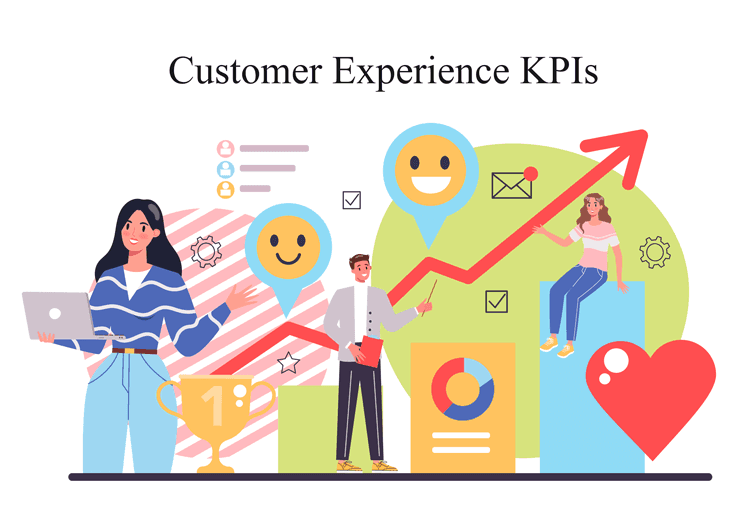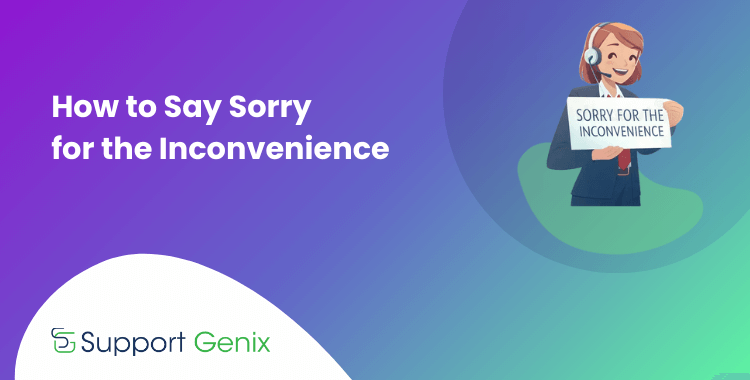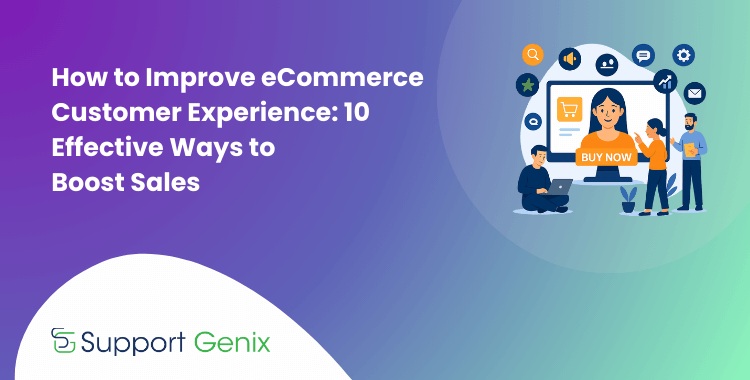A Guide to Key Customer Experience KPIs: Measuring Success
Understanding and improving customer experience is vital for business success today. Key Customer Experience KPIs give important insights into how well you meet customer expectations.
This guide explains the most important customer experience KPIs you should know. These KPIs help you measure, understand, and use data to improve customer service. Whether you want to enhance customer service, increase retention, or grow your business, these KPIs are essential.
Key Takeaways
- Customer experience KPIs help businesses improve their strategy. These insights show customer satisfaction, loyalty, and service quality.
- Learn how tracking KPIs like Net Promoter Score and Customer Satisfaction Score helps. These metrics allow businesses to spot issues and find informed solutions.
- KPIs support data-driven decisions, helping companies make improvements based on real feedback.
- Tracking these indicators boosts customer loyalty and retention, ensuring long-term success.
- Businesses gain a competitive edge by using KPIs to create better customer experiences.
Understanding Customer Experience KPIs

Customer experience KPIs measure how customers feel about a company’s products or services. These indicators track satisfaction, loyalty, and the overall quality of the service.
By tracking KPIs, businesses can understand customer satisfaction and find areas to improve. Research from the Temkin Group shows companies making $1 billion yearly can gain $700 million more in three years by improving customer experience.
Sales and marketing professionals can use these KPIs to improve customer service. Prioritizing customer experience increases retention, with 93% of companies seeing better results.
Recommended Blog for You:
👉 Customer Sentiment: What It Is and How to Measure It Effectively
👉 10 Essential B2C Customer Service Practices for Online Businesses
👉 10 Examples of Bad Customer Service and How to Fix Them
👉 Sales and Customer Service: The Two Pillars of a Successful Business
👉 The Importance of Customer Service Rewards: Why Rewarding Your Team Matters
Types of Customer Experience KPIs
Operational KPIs:
Operational KPIs are key performance indicators that measure the efficiency and effectiveness of day-to-day business operations. They focus on specific processes, tasks, and activities, helping organizations track performance, identify areas for improvement, and ensure resources are used efficiently. Common operational KPIs include cycle time, productivity rates, and service quality metrics.
These KPIs measure the efficiency and effectiveness of customer service operations. They focus on internal processes and how they impact customer experience.
First Contact Resolution (FCR)
First Contact Resolution (FCR) measures how well your team solves problems on the first try. High FCR rates lead to higher customer satisfaction because people like quick, one-time solutions. Customers appreciate not needing to follow up multiple times for their issues.
Formula: FCR % = (Total issues resolved on first attempt / Total issues resolved) * 100 This formula shows the ratio of issues resolved in the first contact to the total number of resolved issues, expressed as a percentage. Tracking FCR helps you gauge the efficiency of your support team and enhance overall customer satisfaction.
Average Resolution Time
Average Resolution Time (ART) tracks how fast customer issues are fully resolved. This KPI shows how efficient and effective your team is in solving problems.
Unlike First Response Time (FRT), ART measures the total time for resolution. Fast problem-solving usually results in higher customer satisfaction.
Formula: ART=Total Number of Resolved CasesTotal Resolution TimeWhere:
- Total Resolution Time is the sum of the time taken to resolve each case.
- Total Number of Resolved Cases is the total number of cases that have been resolved in the given period.
This formula helps calculate how long, on average, it takes to resolve customer issues.
Efficient support teams watch ART to make sure issues are resolved quickly. Tracking ART helps you see if your team has the right tools and skills. Improving ART leads to better, faster service, which boosts the customer experience.
Perceptual KPIs:
Perceptual KPIs measure how customers perceive your brand and its offerings. These indicators focus on customer opinions, feelings, and experiences. They help businesses understand brand reputation and customer satisfaction levels.
Common perceptual KPIs include brand awareness, customer satisfaction scores, and Net Promoter Score. They guide improvements in marketing and customer engagement strategies. These KPIs measure customer perceptions and feelings about their experience with a company. They often come from direct feedback or surveys.
Net Promoter Score (NPS)
Net Promoter Score (NPS) is a key indicator of customer loyalty.
Formula: NPS=%Promoters−%DetractorsIt asks a simple question: “On a scale of 0 to 10, how likely are you to recommend us?”
- Promoters (9-10): These loyal customers are happy and will help grow your business. They are likely to buy again and refer others.
- Passives (7-8): Passives are satisfied customers, but they aren’t excited. Competitors may win them over.
- Detractors (0-6): Unhappy customers, called Detractors, can hurt your business by leaving bad reviews. They can slow your growth with negative feedback.
Subtract the percentage of Detractors from the percentage of Promoters to get the Net Promoter Score (NPS). This number assists you in gauging consumer loyalty and pinpointing areas in need of development.
Customer Satisfaction Score (CSAT)
Customer Satisfaction Score (CSAT) measures how happy customers are with specific experiences. CSAT is often shown as a 5-star rating and helps track customer satisfaction. This score is an important metric for understanding customer happiness. In a competitive market, retaining customers and reducing churn is essential.
Your ability to comprehend and meet your client’s needs will increase their loyalty. This understanding can also attract new business to your company. CSAT surveys are often added to websites and apps for feedback. They provide real-time information on customer satisfaction, especially when using apps.
Customer Effort Score (CES)
Customer Effort Score (CES) is a key metric for measuring customer interaction ease. Unlike team performance metrics, CES focuses on how customers feel about their experiences. It looks at how hard it is to complete tasks like buying or contacting support.
After finishing a task, customers get a survey about the ease of the process. CES surveys are helpful for finding and reducing problems in customer interactions. This improvement enhances the overall customer experience and increases satisfaction.
Customer Reviews and Feedback
To enhance your customer service, set a baseline for feedback response rates. Measure your team’s current response rate percentage and the time taken to provide the first response. This initial data serves as a benchmark for evaluating improvements.
Regularly tracking this information helps you set achievable goals and monitor progress effectively. By establishing and analyzing these metrics, you can find areas for improvement. This process helps ensure your team consistently provides quick and efficient responses.
Outcome-Based KPIs:
Outcome-Based KPIs measure the long-term effects of customer experience on business success. They focus on customer retention, loyalty, and overall revenue growth, guiding strategic improvements for lasting impact. Tracking these metrics helps businesses understand how customer experience drives success.
Customer Retention Rate
One of the most critical KPIs for assessing how successfully your company retains clients is the customer retention rate. This measure shows the percentage of clients who continue with your business after their first experience. It serves as a useful gauge of your client satisfaction and retention tactics.
A high retention rate generally signals that your business is good at satisfying customers. It shows the success of your efforts to build customer loyalty and improve service quality.
Customer Lifetime Value (CLV)
Customer Lifetime Value (CLV) is an important metric for measuring total revenue. It shows how much money a customer brings in during their time with your business. This useful KPI goes beyond just tracking revenue; it gives insights into customer satisfaction and loyalty.
CLV acts as a measure of customer happiness. Satisfied customers usually stay longer with your brand and spend more money. This leads to a higher CLV over time. Therefore, this metric shows your current revenue and reflects the strength of customer relationships and future growth.
Churn Rate
The churn rate measures how many customers stop using your products or services. This metric can show the total number of lost customers or as a percentage over time.
The churn rate can also show the lost revenue because of customer loss. By tracking churn rate, businesses can understand how well they keep customers. This helps identify ways to reduce customer loss, ensuring growth and loyalty.
Customer Loyalty Index
Strengthening relationships with loyal customers can greatly lower marketing and outreach costs. These customers usually stay with brands they love and trust. Customer loyalty surveys are a useful way to measure loyalty and satisfaction.
By collecting feedback directly, brands avoid guessing and clearly understand customer feelings. These surveys provide insights into customer preferences, satisfaction levels, and chances of repeat business. This information helps businesses improve their strategies and increase customer retention.
Additional Specific KPIs
Additional Specific KPIs are unique metrics that focus on special parts of a business. These KPIs provide insights into specific performance areas beyond general measures. Examples include sales conversions and customer acquisition costs.
By tracking these indicators, businesses can make informed decisions and improve strategies. Other examples are website traffic sources and email open rates. These metrics help monitor progress toward specific goals. These can fall under multiple categories depending on how they are used.
Social Media Sentiment Analysis
Social Media Sentiment Analysis is a crucial KPI in social media metrics. This tool helps you understand the emotions, attitudes, and opinions in posts and comments about your brand.
Looking at whether sentiment is positive, negative, or neutral can provide insights. It shows how people feel about your brand’s image. Although it is qualitative and has no specific formula, sentiment analysis tools can assess the tone of interactions. This helps you understand your audience’s feelings about your brand better.
Improving Customer Experience KPIs
Understanding customer pain points
Understanding customer pain points is crucial for enhancing key performance indicators KPIs. Analyze feedback and data to pinpoint common issues that frustrate customers. Addressing these pain points can lead to higher satisfaction scores and improved customer loyalty.
Regularly review customer interactions and survey responses to stay ahead of recurring problems. Proactively identifying and resolving these issues can significantly boost your customer experience metrics.
Implementing Feedback Loops
Create strong feedback loops to improve your customer service strategy continuously. Encourage customers to share their experiences and suggestions, then analyze this feedback for improvements.
This ongoing process helps you adjust to changing customer needs and expectations. By closing the feedback loop, you boost customer satisfaction and show their opinions matter. This fosters a more engaged and loyal customer base.
Personalizing Customer Interactions
Tailoring interactions to individual customer needs can transform your KPIs. Use data to personalize communication and offers, making each customer feel valued. This approach can increase engagement, satisfaction scores, and retention rates.
Personalization shows customers that you understand their preferences and put them first. This approach can greatly affect their overall experience and how they see your brand.
Support Genix
WordPress Support Ticket Plugin
Take Your Customer Support to The Next Level and Boost Customer Satisfaction Rates
Frequently Asked Questions
Why is it important to measure customer experience?
Measuring customer experience improves satisfaction, loyalty, and business growth. It finds issues early and helps fix them quickly. This increases customer retention and boosts their lifetime value.
How can I improve my Net Promoter Score (NPS)?
Listen to feedback and solve customer problems to improve your NPS. Personalize support and communicate regularly. Show customers you value their opinions and improve their experience.
What is the difference between CSAT and CES?
CSAT measures customer happiness after an interaction. CES tracks how easy or hard it was for customers to solve issues. CSAT focuses on satisfaction, while CES measures effort.
How do I calculate Customer Lifetime Value (CLV)?
Multiply average purchase value, purchase frequency, and customer lifespan to calculate CLV. This helps you understand how much profit each customer will bring in the long term.
What are some common tools for measuring customer experience?
Common tools include SurveyMonkey, Qualtrics, and Zendesk. These tools gather feedback, track NPS and CSAT, and provide insights to improve customer experience.
How often should I review my CX KPIs?
Review your CX KPIs every three months to track progress and adjust strategies. Regular reviews help prevent issues and improve the customer experience.
What are the benefits of using social media sentiment analysis?
Sentiment analysis helps understand public opinion and improve brand image. It detects issues early and lets you adjust your strategies.
How can I reduce my customer churn rate?
Reduce churn by solving customer concerns quickly. Offer incentives and personalize their experience. Engage with them regularly to ensure they are happy with your services.
Conclusion
Mastering Key Customer Experience KPIs is important for businesses in a customer-focused market. By tracking and analyzing these metrics, companies can better understand customer perceptions and interactions.
These key performance indicators help find areas that need improvement and guide strategies. This enhances overall customer satisfaction and loyalty. Using these KPIs allows businesses to make data-driven decisions. These decisions lead to better customer experiences and long-term success.


